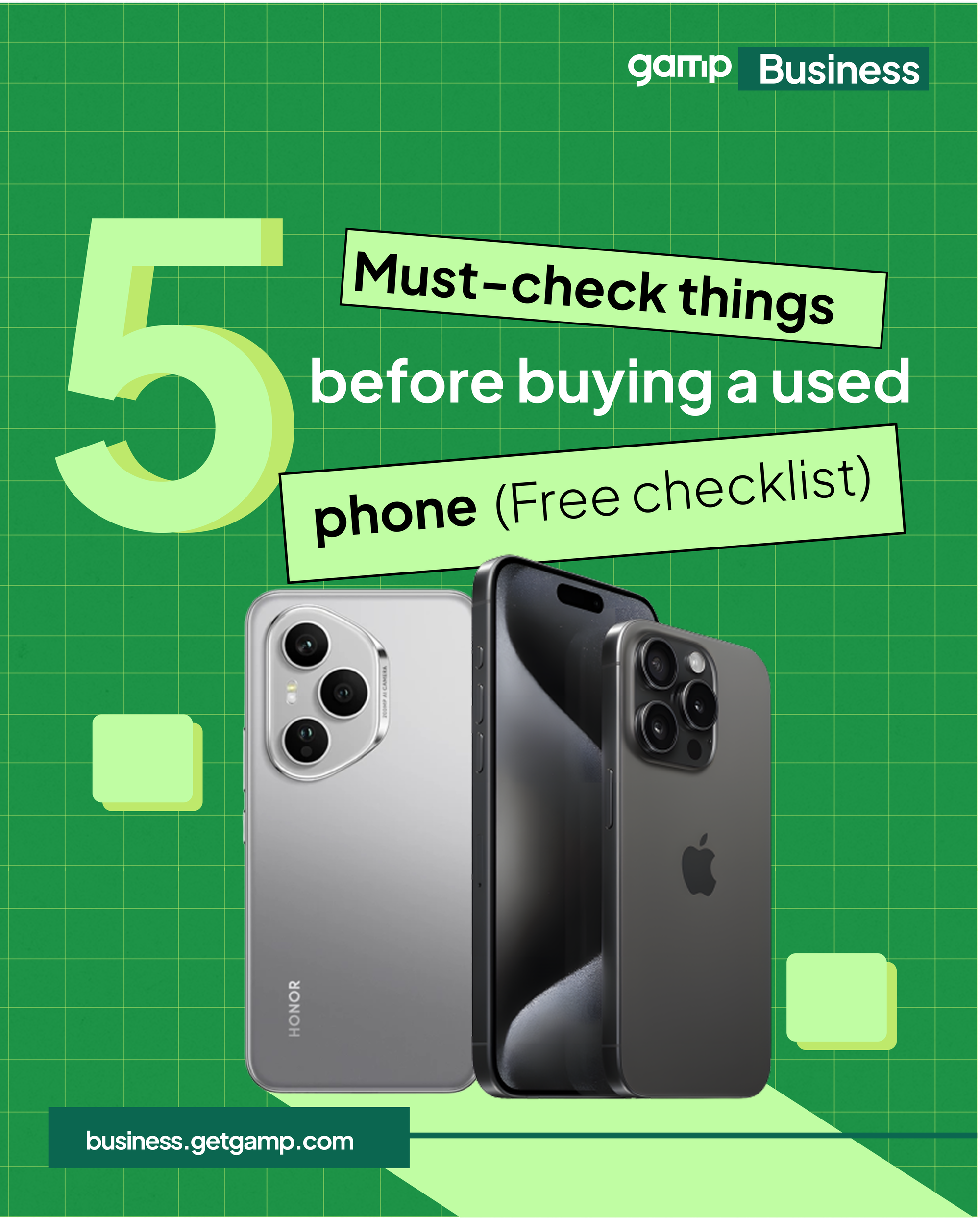5 Must-check things before buying a used phone (Free checklist)

Buying a used phone can save you money and help the environment, but it comes with risks. You don’t want to waste your money on a phone that turns out to be a problem.
Here are five simple checks to make sure you get a good deal.
1. Check the phone’s physical condition
Take a good look at the phone. Are there scratches, dents, or cracks on the screen or body? A few small marks might not matter, but major damage can mean the phone wasn’t cared for properly.
Tip: Use a flashlight to check the screen and body for hidden scratches or cracks.
Some people think physical damage doesn’t matter if the phone works. But damage on the outside could mean there are problems inside too. It’s better to be safe than sorry.
2. Check the phone’s IMEI and serial number
The IMEI (International Mobile Equipment Identity) number is like the phone’s ID card. It tells you if the phone is stolen or blacklisted.

How to Check: Dial *#06# on the phone, or go to the settings and look for “About Phone.” Enter the IMEI number on an IMEI checker website. If the phone is blacklisted, it won’t work on mobile networks.
Fun Fact: Some IMEI checkers can even tell you when and where the phone was first used.

3. Check the battery health
Nobody wants a phone that dies quickly. Make sure the battery is in good condition.
For iPhones: Go to Settings > Battery > Battery Health. Check the maximum capacity percentage.
For Android Phones: Go to Settings > Battery > and you’ll see the information you are looking for.

If it’s not, you can download a free app like AccuBattery to check the battery health.
Some say, “You can just replace the battery if it’s bad.” True, but replacing batteries costs money and takes time. It’s better to buy a phone with a good battery from the start.
Tip: Ask the seller how often they charged the phone. Batteries wear out faster if they’re charged too often.
4. Test all the phone’s features
Before you buy, make sure everything works. Here’s a quick list of what to check:
- Screen: Tap and swipe to see if it responds properly. Check for any unresponsive areas.
- Camera: Take a photo and record a video to check the quality.
- Speakers and Microphone: Play music or a video to test the sound. Make a call to see if the mic works.
- Buttons and Ports: Press all buttons and try plugging in a charger or headphones.
If anything doesn’t work, it could mean expensive repairs later.

5. Make sure the seller is trustworthy
Always check who you’re buying from. Is the seller a well-known business with good reviews, or just a random person?
Tip: If you’re meeting the seller in person, choose a safe, public place. Bring a friend with you for extra safety.
Some people think buying from individuals is always cheaper. While that’s sometimes true, it’s safer to buy from sellers who offer buyer protections, like gamp.
Wrapping it up
Buying a used phone doesn’t have to be risky. Check the physical condition, verify the IMEI, inspect the battery, test all features, and make sure the seller is trustworthy. These steps will help you avoid problems and find a phone you will love.
Ready to buy your next phone?
gamp has got you covered. Explore our wide range of quality phones—new and used—with peace of mind.
Final Tip: Take your time, and don’t rush into buying. A little extra effort now can save you a lot of trouble later.
Good luck finding your next phone.

